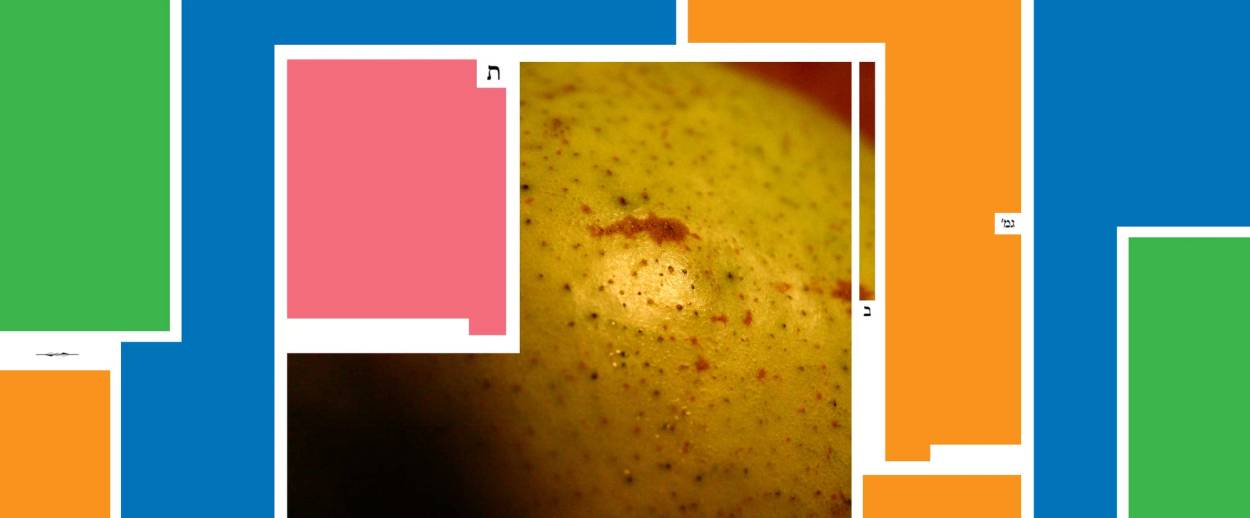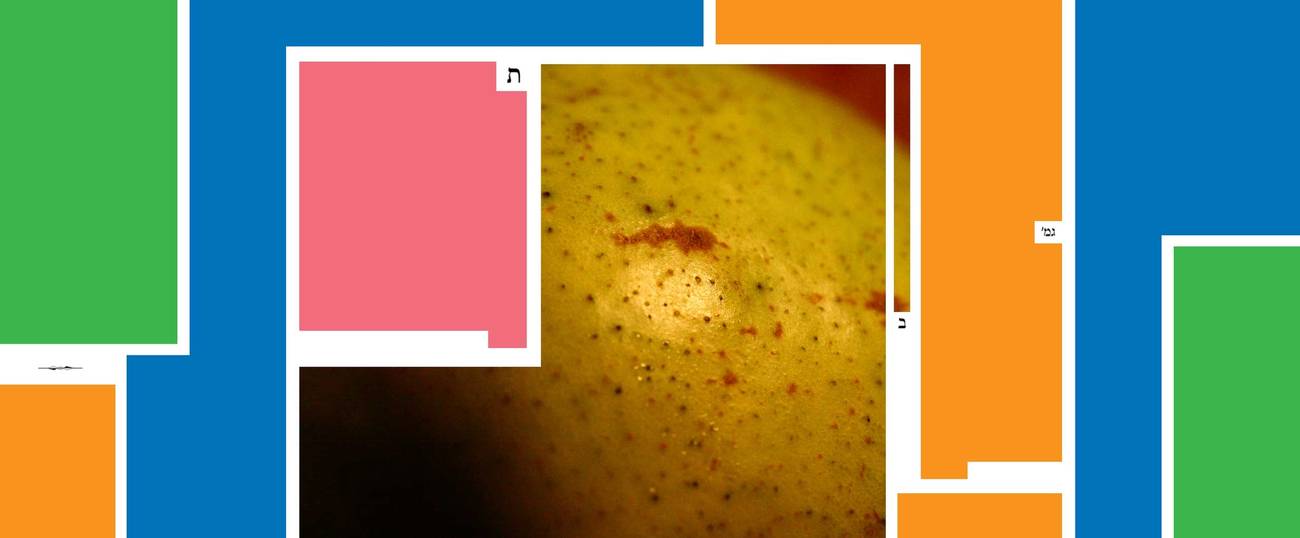On Priestly Perfection
In this week’s ‘Daf Yomi,’ how ancient Talmudic rabbis recreated and understood the lost religious culture of the First Temple




Literary critic Adam Kirsch is reading a page of Talmud a day, along with Jews around the world.
This week, Daf Yomi readers began Chapter Two of Tractate Zevachim, which continues the analysis of what renders a Temple sacrifice invalid. In Chapter One, the subject at issue was designation: an offering must be brought for the sake of the specific kind of sacrifice for which it is designated. If someone designates an animal for a sin-offering, but the priest performs the sacrifice in the belief that it is a guilt-offering, the sacrifice is flawed. It can still be offered, but it does not fulfill the obligation of the person who brought it. Now, in Chapter Two, we learn about a variety of disqualifications having to do with the ritual status of the priest himself.
The priesthood, like animal sacrifice, is one of those Jewish institutions that were once centrally important, but have been basically defunct for the last 2,000 years. People of priestly descent—often designated by the last name Cohen, which is the Hebrew word for priest—still offer a special benediction for the congregation on certain Jewish holidays. But this is a mere relic of the glory that belonged to the priesthood in Temple times. In the Torah, it is clear that only the correct performance of sacrificial rites by the priests—the descendants of Aaron, the brother of Moses—allows the Jewish people to enjoy God’s favor.
This way of thinking about the Jewish relationship to God is very different from the one we are familiar with in rabbinic Judaism, which emphasizes the legal and ethical duties shared by all Jews, regardless of caste. In ancient Judaism, on the contrary, priests were the specialized technicians of the sacred, which is why they are subject to so many rules about ritual purity: if they make a mistake, the entire order of the Jewish cosmos is upset.
What kinds of mistakes can disqualify a priestly offering? The mishna in Zevachim 15b offers a comprehensive list, which the Gemara goes on to analyze item by item. First of all, sacrifices cannot be offered by a non-priest. This may seem obvious, but the Gemara has a surprisingly difficult time finding an ironclad basis for the distinction. One approach looks to a Torah verse, Leviticus 22:2, which says: “Speak to Aaron and his sons, that they separate themselves from the sacred items of the children of Israel, and that they not profane my holy name.” Taking the second half of the sentence as an independent clause, the Gemara interprets it to mean that the children of Israel—that is, the common Israelite, the non-priest—would profane holy things such as sacrifices.
The Gemara goes on to supplement this citation with a series of logical arguments based on a fortiori inference. This is the type of argument takes the form: since A is true, it is makes even more sense that B would be true. For instance, the school of Rabbi Yishmael compares a non-priest to a blemished priest, who is disqualified thanks to a bodily imperfection. A blemished priest is permitted to eat the meat of sacrificial offerings, but he cannot perform the offering himself. Isn’t it all the more obvious that a non-priest, who is not permitted to eat sacrificial offerings, should be forbidden to perform offerings?
But the Gemara challenges this inference. The reason why a blemished priest can’t perform a sacrifice is that “the Torah rendered the animal that is sacrificed like the priest who sacrifices it”: the priest communicates his blemish to the animal. But a non-priest doesn’t have a blemish to communicate, so doesn’t it make sense that he should be allowed to offer a sacrifice? Undaunted, the Gemara goes on to offer several alternative reasons for the ban on non-priests, until the point is proved to the rabbis’ satisfaction.
It’s not only non-priests who are disqualified from offering sacrifices, however. Priests themselves can be disqualified on a variety of grounds. An acute mourner—that is, a person whose close relative has died but is not yet buried—cannot offer a sacrifice. Neither can an uncircumcised priest—which sounds at first like a contradiction in terms. How could it ever come to pass that a Jew, much less a priest, would not be circumcised? The notes to the Koren Talmud cite Rashi, who explained that this is a person who was spared circumcision as a baby on the grounds of fear for his health—perhaps he was too weak to undergo the procedure.
In the Gemara on Zevachim 22b, we learn that the scriptural basis for this rule comes not from the Torah itself, but, unusually, from the prophet Ezekiel, who said: “you have brought in strangers, uncircumcised in heart or uncircumcised in flesh, to be in My Sanctuary, to profane My house.” Uncircumcised in flesh is clear enough; but what does the prophet mean by “uncircumcised in heart”? The Sages explain that this is “one whose heart is not directed toward Heaven,” “one whose actions are estranged from His father in Heaven”—in other words, an apostate. A priest must not only be physically fit to serve in the Temple, he must be spiritually fit as well. As we have seen in many ways in the Talmud, ritual performance must be accompanied by the correct spiritual intention if it is to please God.
When it comes to priests serving in the Temple, however, the correct ritual performance is indispensable. One of the requirements for a fit priest is that he must wear the proper vestments, and the Sages explain that this applies to the smallest details of clothing. It is not just that the vestments must be new, unfrayed, and made of fine linen. Also crucial is that nothing comes between the skin of the priest and his garment, lest he violate the words of Leviticus 6:3: “his linen breeches shall he put upon his body.”
But what if, Rava asks, “a gust of wind entered the vestment,” so that it was lifted away from his skin? Or what if there is a louse or a speck of dirt or a thread inside the vestments? Clothing usually hangs loose under the armpit, away from the skin—does that violate the requirement to be “upon his body”? Most of these questions go unanswered, but there is a kind of pathos in them. When the Temple actually stood and priests wore vestments every day, they would have known how to deal with such questions—a priest getting a loose thread must have been a regular occurrence. But the rabbis, living centuries later, have to try to reconstruct a living practice from a few unclear words in the Torah and the Mishna. Their knowledge of the Temple service will always be incomplete and abstract—which is one reason why this tractate is so full of minute disagreements.
***
Adam Kirsch embarked on the Daf Yomi cycle of daily Talmud study in August 2012. To catch up on the complete archive, click here.
Adam Kirsch is a poet and literary critic, whose books include The People and the Books: 18 Classics of Jewish Literature.